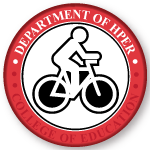Author ORCID Identifier
Document Type
Article
Publication Date
7-14-2020
Publication Title
British Journal of Nutrition
Volume
125
Issue
2
First Page
161
Last Page
171
Abstract
Anthocyanins and bromelain have gained significant attention due to their antioxidative and anti-inflammatory properties. Both have been shown to improve endothelial function, blood pressure (BP) and oxygen utility capacity in humans; however, the combination of these two and the impacts on endothelial function, BP, total antioxidant capacity (TAC) and oxygen utility capacity have not been previously investigated. The purpose of this study was to investigate the impacts of a combined anthocyanins and bromelain supplement (BE) on endothelial function, BP, TAC, oxygen utility capacity and fatigability in healthy adults. Healthy adults (n 18, age 24 (SD 4) years) received BE or placebo in a randomised crossover design. Brachial artery flow-mediated dilation (FMD), BP, TAC, resting heart rate, oxygen utility capacity and fatigability were measured pre- and post-BE and placebo intake. The BE group showed significantly increased FMD, reduced systolic BP and improved oxygen utility capacity compared with the placebo group (P < 0·05). Tissue saturation and oxygenated Hb significantly increased following BE intake, while deoxygenated Hb significantly decreased (P < 0·05) during exercise. Additionally, TAC was significantly increased following BE intake (P < 0·05). There were no significant differences for resting heart rate, diastolic BP or fatigability index. These results suggest that BE intake is an effective nutritional therapy for improving endothelial function, BP, TAC and oxygen utility capacity, which may be beneficial to support vascular health in humans.
Recommended Citation
Pekas EJ, Shin J, Headid RJ, et al. Combined anthocyanins and bromelain supplement improves endothelial function and skeletal muscle oxygenation status in adults: a double-blind placebo-controlled randomised crossover clinical trial. British Journal of Nutrition. 2021;125(2):161-171. doi:10.1017/S0007114520002548


Comments
© The Author(s), 2020. Published by Cambridge University Press on behalf of The Nutrition Society